Coat Color Genetics
You can also see the different colors as they grow on this page.
To date, there are at least ten known loci that control coat color in gerbils; each locus controls a different trait. Each of these loci has a dominant allele, that usually represents the form of the trait commonly found in the wild, and at least one recessive allele, representing a less common form of the trait. The eight loci discussed on this page are: A, C, D, E, P, Uw, Sp, and Re. I will also touch on Steel-factor, which is a different sort of locus. The loci not discussed include the Semi-Dominant Lethal Spotting and Wavy mutations, which are not known to be present in the USA at this point.
To understand how these loci work, it is necessary to know how color is structured on the hair.

B: The middle band is a golden brown. Because of the way the individual hairs of the coat overlap, this middle band is the most visible, and contributes most to the perceived overall color.
C: The tip of the hair is black, which gives rise to "ticking", the stippled appearance of colors such as Agouti and Nutmeg.
This gray-brown-black pattern causes the wild-colored coat to appear a dark brown.
Navigation
| A-locus | C-locus | D-locus | E-locus | P-locus | Uw-locus | Sp-locus | Re-locus | Steel-factor |
The E-locus: Extension of Black vs. Yellow
This locus controls the extent of black pigment relative to yellow pigment in the coat. The wild-color allele, E, gives the normal extension of black: the dark base and tip of the hair shaft. The allele for recessive yellow, e, increases the ratio of yellow pigment in the coat by extending the golden-brown middle band of the hair shaft. In a gerbil with two e alleles, the middle band of the hair shaft is extended and the gray base of the hair is lightened, giving the overall coat a warm honey shade.
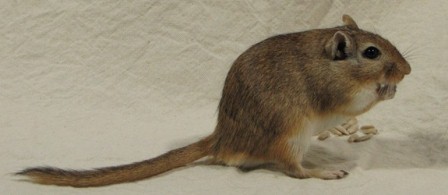

A- C- D- E- P- Uw- :: Agouti
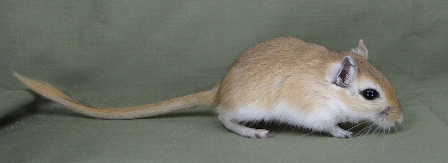

A- C- D- ee P- Uw- :: Dark-Eyed Honey
In many other species, the recessive yellow mutation masks the A-locus: an A- ee animal and an aa ee animal will look the same. In gerbils, something quite different happens. In young gerbils, recessive yellow does appear to mask the A-locus, creating a solid orange coat. An A- ee pup looks much like an aa ee pup, only with a white belly. But in the adult coat, the hairs regain their dark tips.
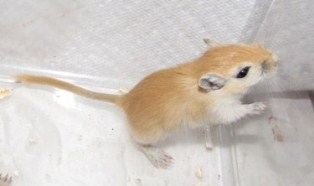

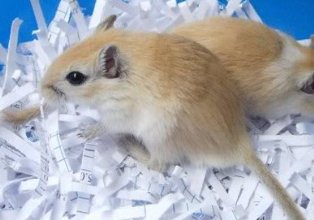

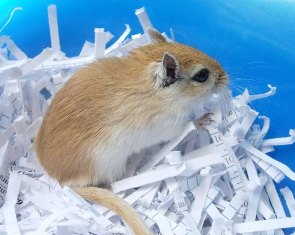

Strangely, this ticking appears on the nonagouti form as well, and is even more pronounced than on the agouti form. The nonagouti form, called Nutmeg, undergoes a dramatic change when the heavily-ticked adult coat comes in. The Nutmeg coat is quite variable, but overall gives the impression of an Agouti gerbil without the characteristic white belly.
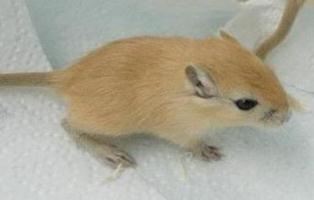

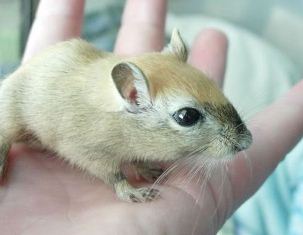

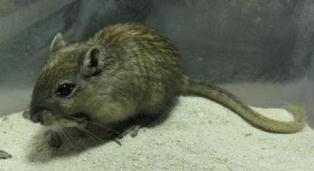

There is another recessive allele, ef, which causes a pattern known as Schimmel. The ef allele removes the black pigment at both the base and the tip of the hair, creating a bright orange coat free of ticking. This allele also causes the coat on the main body to fade with age, leaving the impression of an orange Colorpoint.
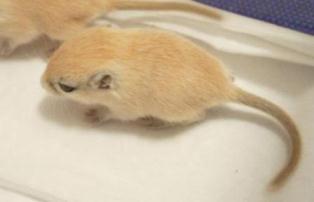

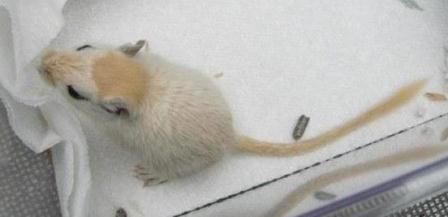

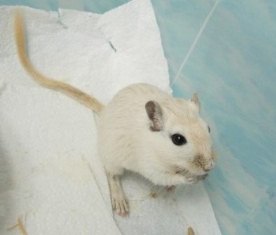

The e allele is incompletely dominant over the ef allele; a gerbil with one e allele and one ef allele has a coat similar to a gerbil with two e alleles, but with drastically reduced ticking, and it fades slightly with age.
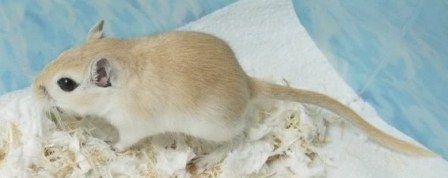

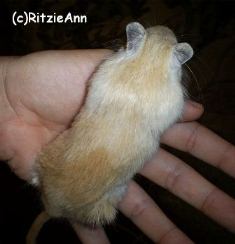

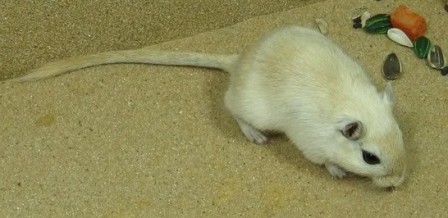


Unless otherwise specified, all text and images at this site are licensed under a
Creative Commons Attribution-Noncommercial-Share Alike 3.0 United States License